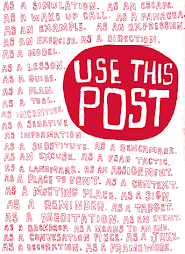Monday, June 3, 2013
zeynep tufekci
http://dmlcentral.net/blog/zeynep-tufekci/networked-politics-tahrir-taksim-there-social-media-fueled-protest-style
1- Lack of organized, institutional leadership.
2- Organized around a “no” not a “go.
The closest example to a mass participatory online environment that tries to negotiate complex outcomes is Wikipedia.
3- A feeling of lack of institutional outlet.
4- Non-activist participation.
5- External Attention.
6- Social Media as Structuring the Narrative.
Twitter is the new spin room for the 21st century.
7- Breaking of Pluralistic Ignorance and altering of Collective Action dynamics.
8- Not Easily Steerable Towards Complex, Strategic Political Action.
While social-media fueled collective action lacks the affordances of politics and the institutional capital that political parties and NGOs can provide, they can be very good at drawing red lines and organizing and gathering attention to a loud “NO!” (ie., Mubarak, SOPA/PIPA, Gezi Parki demolition). However, such movements seem usually unable to translate their power into a next step which directly impacts policy, law or regulation through elections or parliament.





































